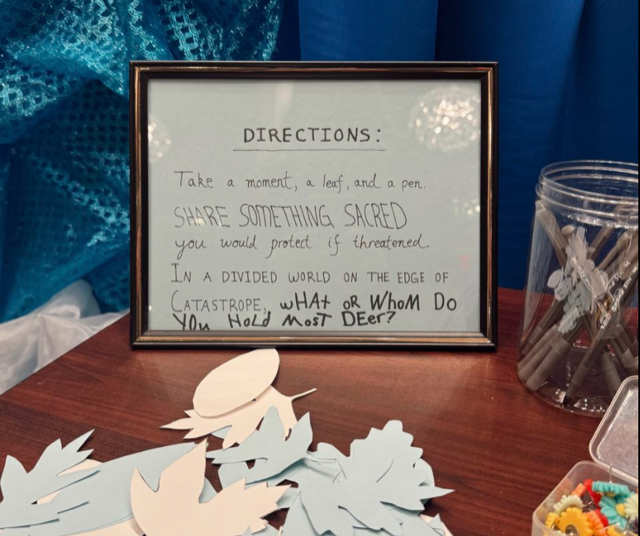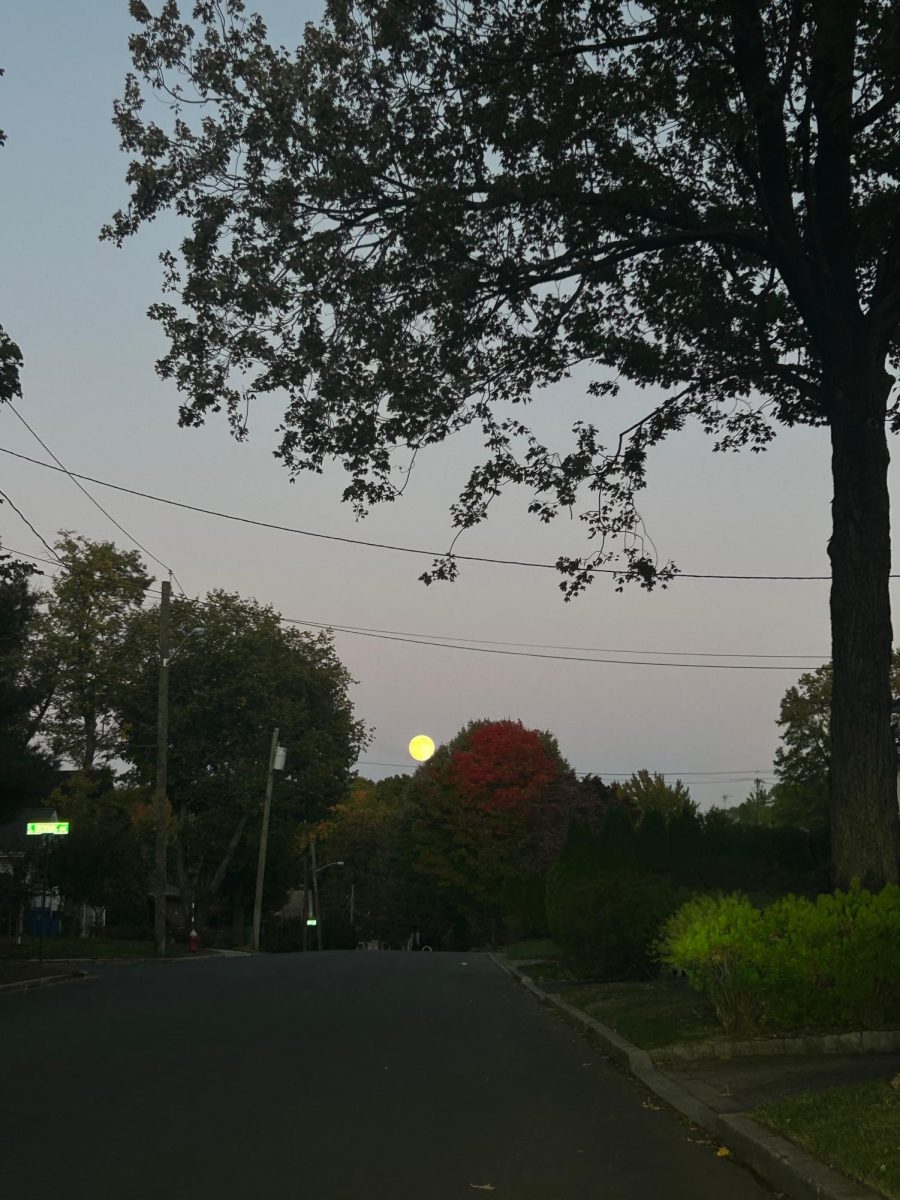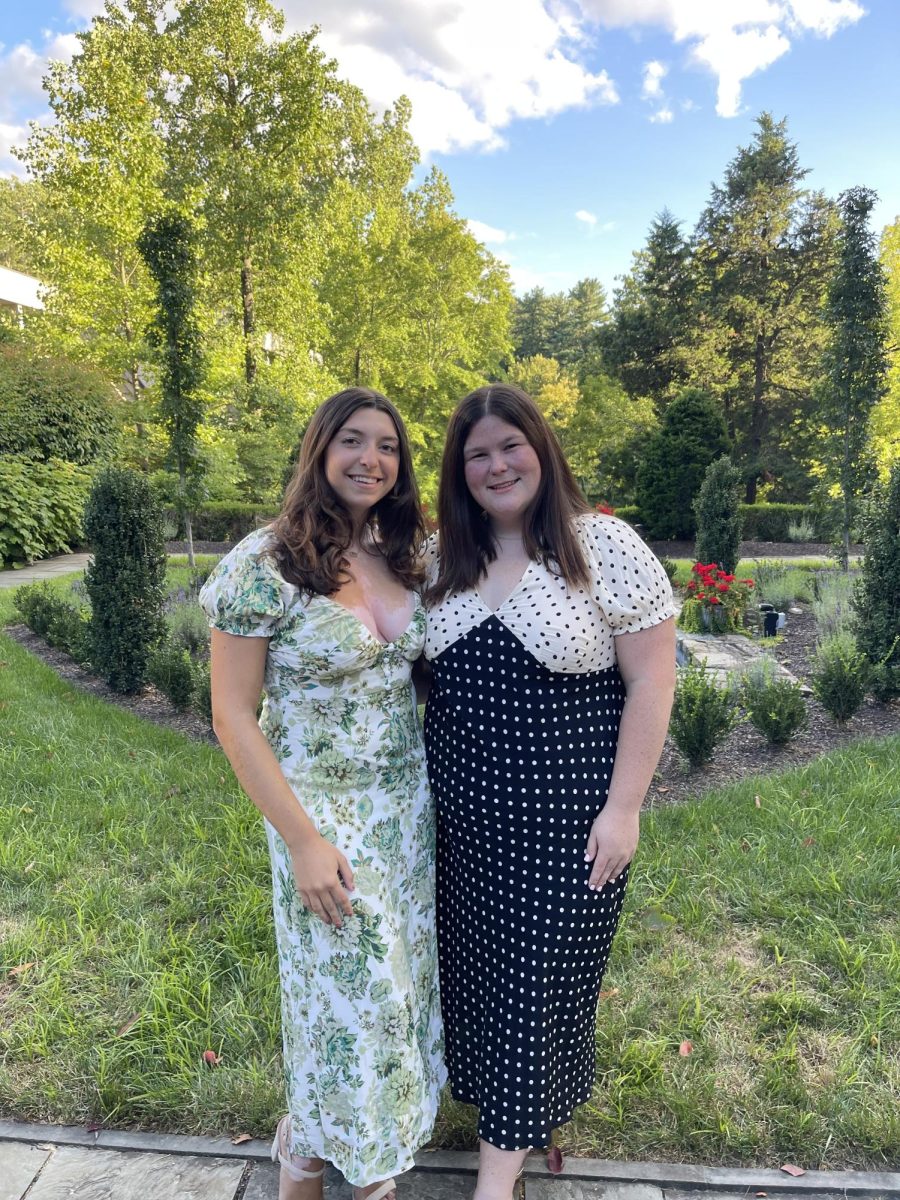There is something evocative – near sardonic– in seeing a show titled Far Away and feeling so close to home. So often, we use cinema as a distraction, like our sanctum: a harbor amid ruffled waters. Sick of the warm weather? Turn on Elf. Failed an exam? Watch some Gilmore Girls or One Tree Hill and nestle in the naivetes of high school. However, this production did not offer the same freedom.
In a rendition of a 2000s Caryl Churchill classic, director Edward Sobel and his crew of Villanovans examined the foils of formative adolescence in a fractured world. It is a narrative, I think, we know all too well.
The show commenced with a rather familiar climate: a mellow home with a glowing fireplace, floral wooden chairs and oversized blankets. In this safe haven, we are introduced to the callow Joan.
Joan, no more than 14, awakens to a scream outside her window. As she scrambles downstairs, bewildered, there is an immediate aversion of concern. Her caretaker assures her it must have been a bird, or her uncle’s rambunctious friends, but buried beneath the nonchalance, we know there is more.
This scene embodies coddled insulation from the real world. Our generation was raised in the trenches of economic and civic turmoil, our nation feeble from 9/11. We were Joans: dubious and doubtful of the illusion, but still sheltered. Until we became too curious.
Joan pushes past the caretaker’s lies, inquiring about the blood she discovers at the scene. During this part of the show, I was unsure whether to commend or console her.
Even more alarming is the vindication she receives back: “It’s the blood of a traitor. Tomorrow, we can clean.”
Joan returns to bed, satisfied, as she hears, “Welcome to the rebellion.”
This realization of a chasmic cause comes with a desire to contribute, also demonstrating desensitization to violence because we believe we are on the “good” side. This rehearsed routine of inaction infiltrates decades and decades of children.
For Joan (and all us Villanovans), this sanctioned indifference entailed a degree. For us, this could mean political science, economics, math… the options are limitless. However, Joan studied hats. Her chance at education, a chance half the world will never know, was wasted on hats.
Let me be clear here: I have no ill will towards the creatives. I write articles for fun. In all truth, fashion boasts a fundamental role in revolutions (think Cinna in Catching Fire). So, where did Joan stumble and how did she remain part of this dreaded pattern of violence?
Instead of fashion as a positive influence, hats were a mere diversion from the atrocities of the real world in Joan’s story. Each week, there is a parade of prisoners in elaborate hats: feathered and lurid and loud. The parade is so loud that people cannot hear the chains shackling the prisoners. And each week, the audience learns, “[The hats] are burned with the bodies.” Joan is saddened with this notion for the loss of her hats. Who cares for humans when there are hats?
The hats are another pacifier. Like the bleach erased the blood, like the coins we donate to a cause across the ocean. Like Elf or Gilmore Girls or Starbucks in the mornings. We crave comforts, these means of returning to naivete. We long to go back to a time when all we would contribute to the rebellion was a clean slate. It is through willful ignorance that we have become entranced in futile divide. And the divide, this aversion towards “other” and romanticization of a rebellion with no real action, leaves us weak.
This weakness is concretized in the final scene of the play. The entire world is war. Joan’s home, once an oasis from outside horrors, is riddled with branches and broken bulbs. No more floral or fire, no blanketed insulation from the truth. How much will we evade? How much time do we have until the truth is unavoidable, too shocking to ignore?
“The show ends on an inhale,” Grace Acquilano, the grad school actress who portrayed Joan, said. “We like stories to end on exhales, but sometimes stories have no end.”
How will we continue our narrative? How can we make the best of the next exhale?






